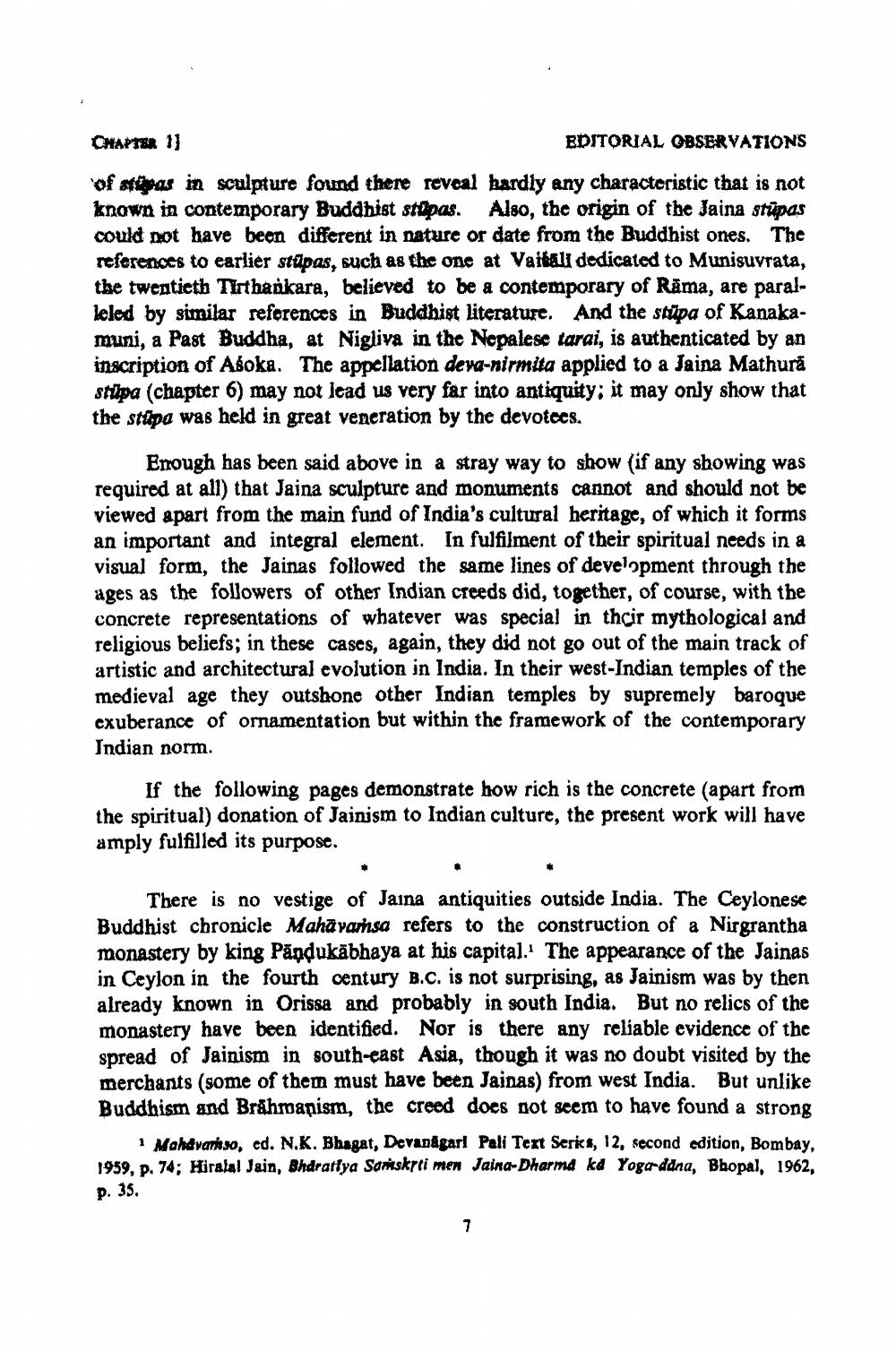________________
CHAPTER 11
EDITORIAL OBSERVATIONS
of stupas in sculpture found there reveal hardly any characteristic that is not known in contemporary Buddhist stūpas. Also, the origin of the Jaina stūpas could not have been different in nature or date from the Buddhist ones. The references to earlier stūpas, such as the one at Vaitall dedicated to Munisuvrata, the twentieth Tirthankara, believed to be a contemporary of Rama, are paralleled by similar references in Buddhist literature. And the stupa of Kanakamuni, a Past Buddha, at Nigliva in the Nepalese tarai, is authenticated by an inscription of Asoka. The appellation deva-nirmita applied to a Jaina Mathura stupa (chapter 6) may not lead us very far into antiquity; it may only show that the stupa was held in great veneration by the devotees.
Enough has been said above in a stray way to show (if any showing was required at all) that Jaina sculpture and monuments cannot and should not be viewed apart from the main fund of India's cultural heritage, of which it forms an important and integral element. In fulfilment of their spiritual needs in a visual form, the Jainas followed the same lines of development through the ages as the followers of other Indian creeds did, together, of course, with the concrete representations of whatever was special in their mythological and religious beliefs; in these cases, again, they did not go out of the main track of artistic and architectural evolution in India. In their west-Indian temples of the medieval age they outshone other Indian temples by supremely baroque exuberance of ornamentation but within the framework of the contemporary Indian norm.
If the following pages demonstrate how rich is the concrete (apart from the spiritual) donation of Jainism to Indian culture, the present work will have amply fulfilled its purpose.
There is no vestige of Jaina antiquities outside India. The Ceylonese Buddhist chronicle Mahavamsa refers to the construction of a Nirgrantha monastery by king Pandukābhaya at his capital. The appearance of the Jainas in Ceylon in the fourth century B.C. is not surprising, as Jainism was by then already known in Orissa and probably in south India. But no relics of the monastery have been identified. Nor is there any reliable evidence of the spread of Jainism in south-east Asia, though it was no doubt visited by the merchants (some of them must have been Jainas) from west India. But unlike Buddhism and Brahmanism, the creed does not seem to have found a strong
1 Mahdvarkso, ed. N.K. Bhagat, Devanagar! Pali Text Serks, 12, second edition, Bombay, 1959, p. 74; Hiralal Jain, Bharatiya Samskrti men Jaina-Dharma kd Yoga-dana, Bhopal, 1962, p. 35.
7




